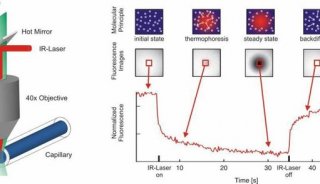凝血项目的推荐危急值
很多凝血实验室都设置了项目危急值,这些危急值的设置有没有依据?依据够不够可靠?本期以指南为主要依据,列出对凝血筛查项目危急值设置的建议,供参考。
APTT危急值的设置:
1.根据ACCP指南,使用各种治疗剂量抗凝药物时,APTT与正常对照的比值均应在3.0以下,例如肝素(比值1.5~2.5)、阿加曲班(比值 1.5~3.0)。对应的APTT上限一般在100秒左右。这成为APTT危急值设定的主要依据。[1]
2. 临床研究表明使用肝素后抗Xa活性超过1U/mL的患者,比未超过者出血风险显著增加[2, 3],以抗Xa活性1U/mL对应的APTT秒数作为危急值可能更为准确,但需各实验室收集样本检测后自行确定。
因此依据相关指南及临床研究,APTT危急值推荐设定为≥APTT正常均值的3倍,或应用肝素后抗Xa活性1U/mL对应的APTT均值秒数。
PT(INR)危急值的设置:
1.根据ACCP相关指南[4],当INR超出治疗范围但<5.0,且无明显出血表现时,建议降低维K拮抗药剂量并增加监测频次,不需要输注逆转药等措施;而当INR>5.0时,则要考虑应用逆转药。这为INR危急值的设定提供了一个依据。
2. 根据ESC相关指南[5],瓣膜性心脏病的华法林抗凝,最高危对应的INR值不超过4.0。在一些INR与预后相关性的临床研究中,INR值升高与死亡风险呈正相关[6],4.0也被很多实验室确定为危急值。
因此依据相关指南及临床研究,INR危急值推荐设定为≥4.0或5.0,PT危急值可据此换算。
FIB危急值的设置依据:
1.大部分DIC诊断与处置指南中[7, 8],FIB<1.0g/L为积分项,且提示需给予FIB补充。
2.输血相关指南中[9],冷沉淀的应用指征一般为FIB<1.0g/L。而在创伤出血、产后出血等需大量输血的处置指南中,认为FIB需维持在1.5~2.0 g/L[10, 11]。
因此依据相关指南及临床研究,FIB危急值推荐设定为≤1.0g/L。在沟通基础上,特定科室(如产科)可考虑提高至≤1.5g/L或更高。没有对FIB升高设置危急值的依据。
其他常规凝血项目如TT、D-dimer则没有基于指南的危急值设置建议,上期本博也对为何不设置D-dimer危急值做了分析。
参考文献
1. Hirsh J, Bauer KA, Donati MB, et al. Parenteral anticoagulants: American College of Chest Physicians Evidence-Based Clinical Practice Guidelines (8th Edition). Chest. 2008; 133(6suppl):141S-159S.
2. Bates SM, Weitz JI, Johnston M,et al. Use of a fixed activated partial thromboplastin time ratio to establish a therapeutic range for unfractionated heparin. Arch Intern Med. 2001; 161:385-391.
3. van den Besselaar AM, Sturk A,Reijnierse GL. Monitoring of unfractionated heparin with the activated partial thromboplastintime: determination of therapeutic ranges. Thromb Res. 2002; 107:235-240.
4. Ansell J, Hirsh J, Hylek E, etal. Pharmacology and management of the vitamin K antagonists: American Collegeof Chest Physicians Evidence-Based Clinical Practice Guidelines (8th Edition). Chest.2008; 133(6 suppl):160S-198S.
5. Baumgartner H, Falk V, Bax JJ, et al. 2017 ESC/EACTS Guidelines for the Management of Valvular Heart Disease. Rev EspCardiol (Engl Ed). 2018; 71(2):110.
6.Doering TA, Plapp F, Crawford JM. Establishing an Evidence Base for Critical Laboratory Value Thresholds. Am J Clin Pathol. 2014;142(5):617-28.
7.Levi M, Toh CH, Thachil J, Watson HG. Guidelines for the diagnosis and management of disseminated intravascular coagulation. British Committee for Standards in Haematology. Br J Haematol. 2009; 145(1):24-33.
8. Taylor FB Jr, Toh CH, Hoots WK, et al.Towards definition, clinical and laboratory criteria, and a scoring system for disseminated intravascular coagulation. Thromb Haemost. 2001; 86(5):1327-30.
9. Blood Transfusion. NICE Guideline, No.24. National Clinical Guideline Centre (UK).London: National Institute forHealth and Care Excellence (UK); 2015 Nov.
10. Winearls J, Campbell D, Hurn C, et al. Fibrinogen in traumatic haemorrhage: A narrative review. Injury. 2017; 48(2):230-242.
11. Sentilhes L, Vayssière C, Deneux-Tharaux C, et al. Postpartum hemorrhage: guidelines for clinicalpractice from the French College of Gynaecologists and Obstetricians (CNGOF): in collaboration with the French Society of Anesthesiology and Intensive Care(SFAR). Eur J Obstet Gynecol Reprod Biol. 2016;198:12-21.
-
产品技术

-
科技前沿

-
焦点事件

-
项目成果
















